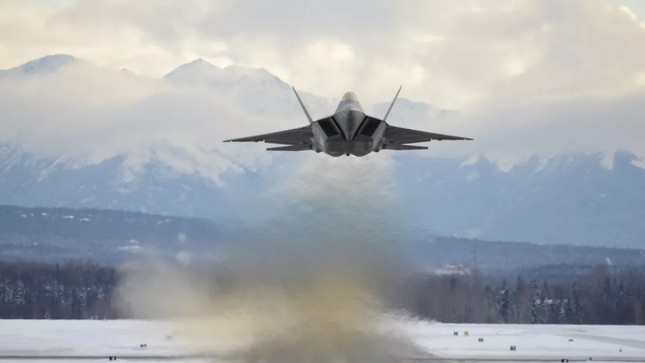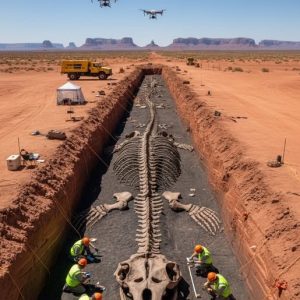 |
| An F-22 fighter jet took off from a US military base in Alaska to shoot down a suspected Chinese spy balloon over South Carolina on February 4. |
The US military identified the first of these objects as a 200-foot-tall Chinese spy balloon floating at an altitude of about 60,000 feet over Alaska in late January. The US government tracked the balloon for several days as it drifted towards the southeastern United States, eventually shooting it down off the coast of South Carolina with a fighter jet on February 4.
Three other objects (including a car-sized cylinder shot down over Canada’s frigid Yukon territory and a strange octagonal object shot into the waters of Lake Huron) remain unidentified, and all were destroyed between February 9 and 12.
The three objects were less sophisticated than reconnaissance balloons, White House officials said at a press briefing on February 13, and hovered between 6,000 and 12,000 meters. However, they were flying in airspace occupied by commercial aircraft, which added to the security risks.
These incidents have left many wondering why the US government is suddenly detecting and destroying so many unidentified objects in US and Canadian airspace. Are there really more objects out there than usual, or is the US military simply getting better at tracking them?
While it’s impossible to know for sure how many objects are in a given country’s airspace at any given time, U.S. government officials have made one point clear: After spotting the Chinese surveillance balloons in late January, the U.S. military deliberately expanded its search for strange objects at similar altitudes. That effort, apparently, was successful.
“We have been taking a closer look at our airspace at these altitudes, including enhancing our radar, which may at least partially explain the increase in objects we have detected over the past week,” Melissa Dalton, assistant secretary of defense for hemispheric and homeland defense affairs, said at a press briefing on Feb. 12.
In other words: After the military successfully tracked spy balloons across the United States for several days, they learned how best to spot similar objects at similar altitudes that had previously gone unnoticed, Jack Weinstein, a professor of international security at Boston University and a retired lieutenant general in the U.S. Air Force, said in an interview.
John Kirby, a spokesman for the White House National Security Council, added at a Feb. 13 press briefing that China has been monitoring the United States with high-altitude spy balloons for several years — at least since the administration of former President Donald Trump — but those objects had never been detected before.
Meanwhile, China claims that the US has also launched reconnaissance balloons into Chinese airspace more than 10 times since January 2022.
A Cultural Shift About UFO Sightings
The bizarre incidents since early February are just the latest in a string of hundreds of encounters between US military personnel and unidentified flying objects (UFOs), or unidentified anomalous phenomena (UAPs), as the US military calls them, reported over the past few years.
In 2022 alone, US Department of Defense officials opened investigations into 366 reported UAP sightings, 171 of which remained unresolved at year’s end, according to the first annual report from the All-Domain Anomaly Resolution Office (AARO), a Pentagon office created in early 2022 to investigate alleged UAP sightings by US military personnel.
According to a Pentagon report on UAP sightings from 2004 to 2021, the number of incidents in those years was more than double the 144 alleged UAP encounters reported by the military in the previous 17 years.
The large increase in UAP sightings may be the result of a “cultural shift” in the military, Weinstein said.
“The military may be transitioning to a culture where people aren’t ridiculed for reporting unidentified phenomena that they might have been ridiculed for in the past,” Weinstein said. “The culture now allows pilots to make those reports.”
Weinstein added that his father — a radio operator on a bomber plane during World War II — saw phenomena he couldn’t explain, but didn’t feel comfortable reporting them.
Of the 366 new UAP cases discovered last year, 163 were resolved as “balloons or balloon-like entities,” according to AARO’s year-end report.
Another 26 were identified as drones, while six were identified as airborne “clutter,” such as birds or plastic bags. Cases from previous years have also been attributed to weather phenomena and optical illusions.
The report does not mention aliens as a possible explanation for the UAP. For Weinstein, this is no surprise. “I think if you’re smart enough to come to Earth from another planet, you’re smart enough not to get caught,” Weinstein said.










